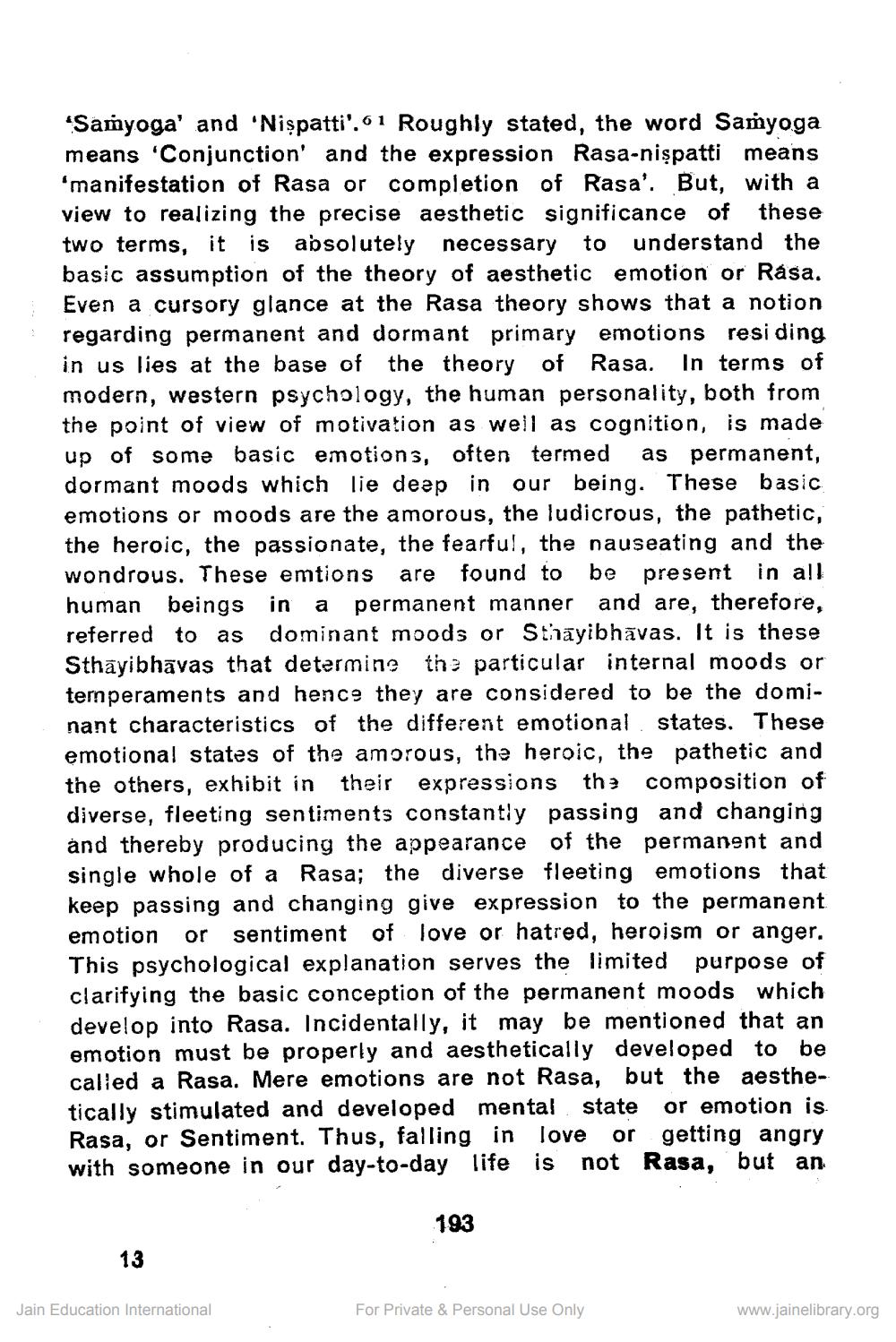________________
Samyoga' and 'Nişpatti'. 61 Roughly stated, the word Samyoga means 'Conjunction' and the expression Rasa-nişpatti means 'manifestation of Rasa or completion of Rasa'. But, with a view to realizing the precise aesthetic significance of these two terms, it is absolutely necessary to understand the basic assumption of the theory of aesthetic emotion or Rasa. Even a cursory glance at the Rasa theory shows that a notion regarding permanent and dormant primary emotions residing in us lies at the base of the theory of Rasa. In terms of modern, western psychology, the human personality, both from the point of view of motivation as well as cognition, is made up of some basic emotions, often termed as permanent, dormant moods which lie deep in our being. These basic emotions or moods are the amorous, the ludicrous, the pathetic, the heroic, the passionate, the fearful, the nauseating and the wondrous. These emtions are found to be present in a!! human beings in a permanent manner and are, therefore, referred to as dominant moods or Strayibhāvas. It is these Sthāvibhāvas that determine the particular internal moods or ternperaments and hence they are considered to be the dominant characteristics of the different emotional states. These emotional states of the amorous, the heroic, the pathetic and the others, exhibit in their expressions the composition of diverse, fleeting sentiments constantly passing and changing and thereby producing the appearance of the permanent and single whole of a Rasa; the diverse fleeting emotions that keep passing and changing give expression to the permanent emotion or sentiment of love or hatred, heroism or anger. This psychological explanation serves the limited purpose of clarifying the basic conception of the permanent moods which develop into Rasa. Incidentally, it may be mentioned that an emotion must be properly and aesthetically developed to be called a Rasa. Mere emotions are not Rasa, but the aesthetically stimulated and developed mental state or emotion is Rasa, or Sentiment. Thus, falling in love or getting angry with someone in our day-to-day life is not Rasa, but an
193
13
Jain Education International
For Private & Personal Use Only
www.jainelibrary.org




